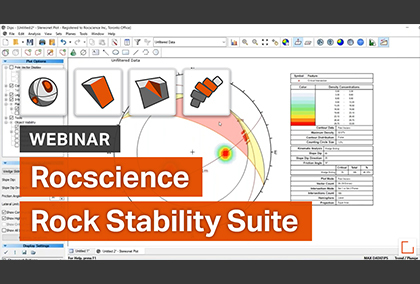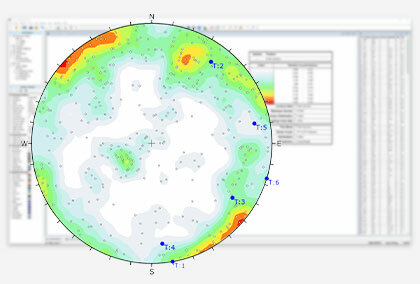A Joint Effort: Analyzing Rock Slopes with Dips and SWedge
When it comes to the Rocscience software suite, seamless integration between programs is always at the forefront of our minds. Cooperation and interoperability between programs mean better, more accurate analyses of the geotechnical problem at hand. A perfect example of this collaboration of data is the import feature between the Rocscience programs SWedge and Dips.
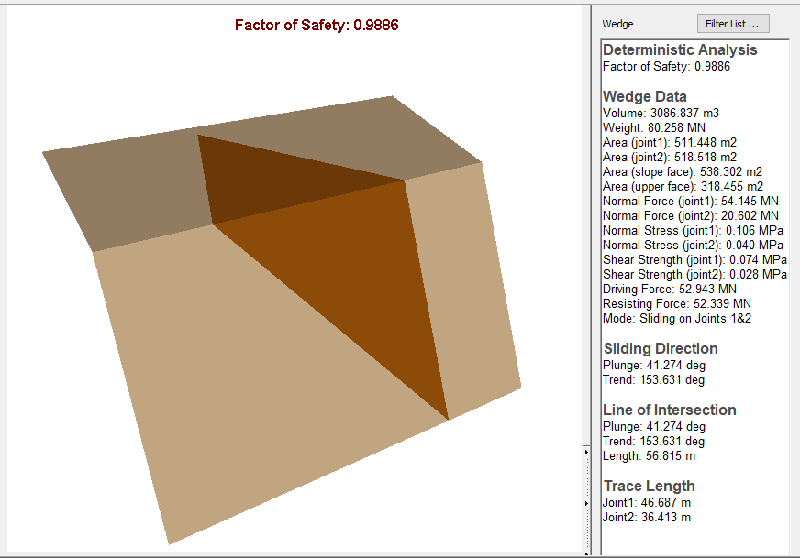
SWedge is a quick and easy-to-use analysis tool for evaluating the geometry and stability of surface wedges in rock slopes. Wedges are defined by two intersecting discontinuity planes, the slope surface, and an optional tension crack. The program evaluates the wedge safety factor through an extensive array of analysis options including Deterministic, Probabilistic, Combinations, Sensitivity, and Persistence analysis. The program also offers the ability to model support solutions such as rock bolts, shotcrete, or support pressure to help increase the wedge safety factor.
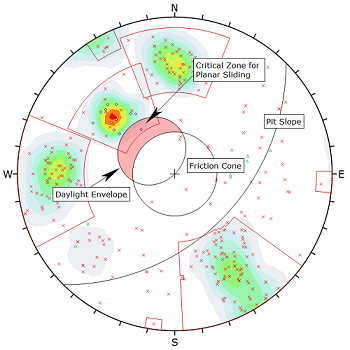
Commonly used with SWedge is the Rocscience program Dips. Dips is a popular stereographic projection program for the interactive analysis of orientation based geological data. The program allows the user to analyze and visualize structural data following the same techniques used in manual stereonets. It has many computational features, such as statistical contouring of orientation clustering, mean orientation and confidence calculation, cluster variability, kinematic analysis, and qualitative and quantitative feature attribute analysis.
This orientation data calculated in Dips is what is imported into SWedge to help with analyzing rock and slope stability.
How to Import Dips data into SWedge
Importing Dips data into SWedge is an incredibly simple process and takes only a few clicks of the mouse. Simply open the Input Data dialog, select the Joints tab, and click on Import from Dips to select your Dips file.
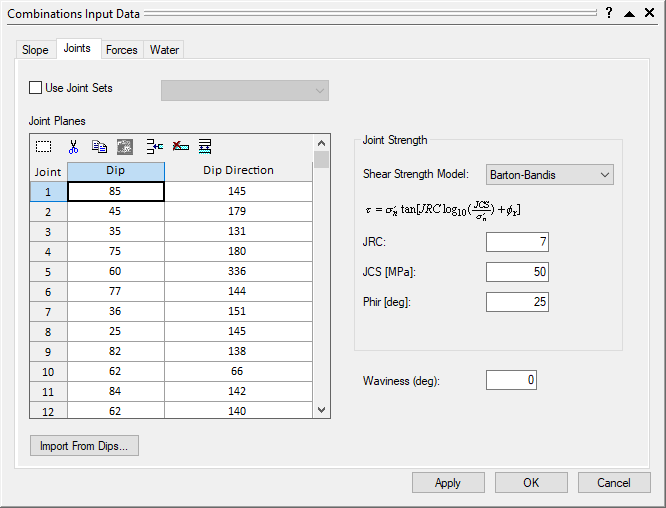
The type of orientation data which can be imported depends on the SWedge analysis type that you have selected. For Deterministic analysis, you can import individual plane orientations from a Dips file and assign the orientations to the Slope, Upper Face, Joint1, Joint2, or Tension Crack. For Probabilistic analysis, you can import mean orientations and statistical joint set information (Fisher K value or standard deviation), and assign the information to Joint1, Joint2 or Tension Crack. Finally, for Combinations analysis you can import any number of plane orientations and SWedge will analyze the stability of all possible joint combinations.
Learn more
To learn more about the various SWedge analysis options as well as the Dips import feature, Rocscience has a full library of tutorials available in the Online Help section.
